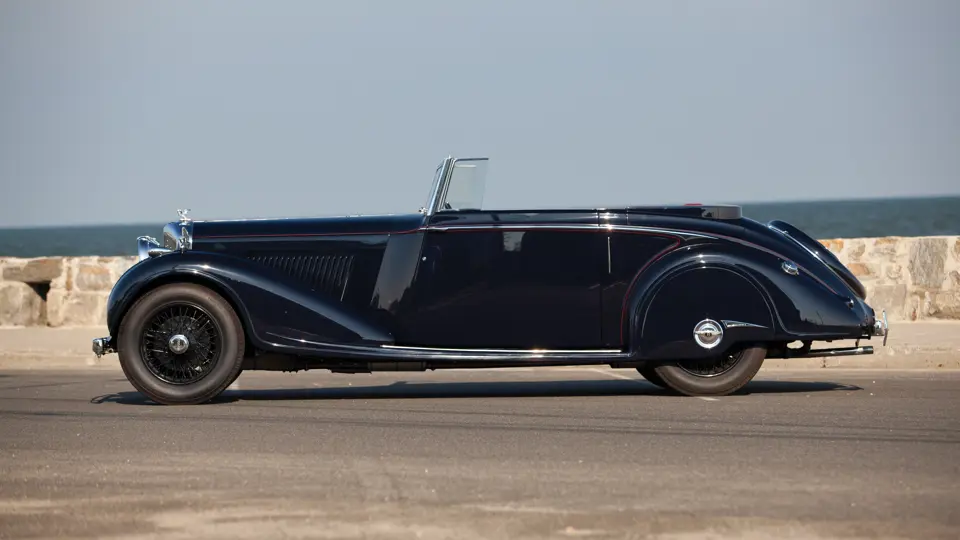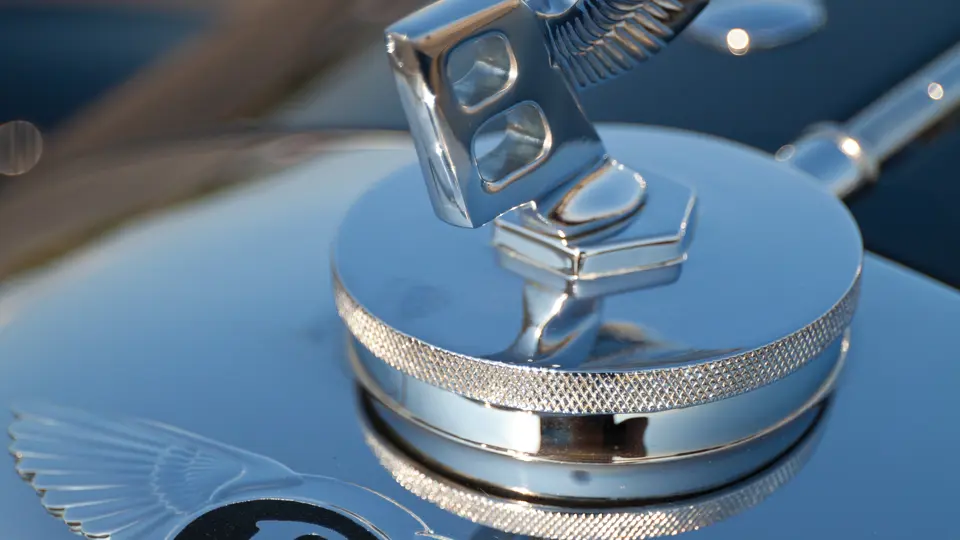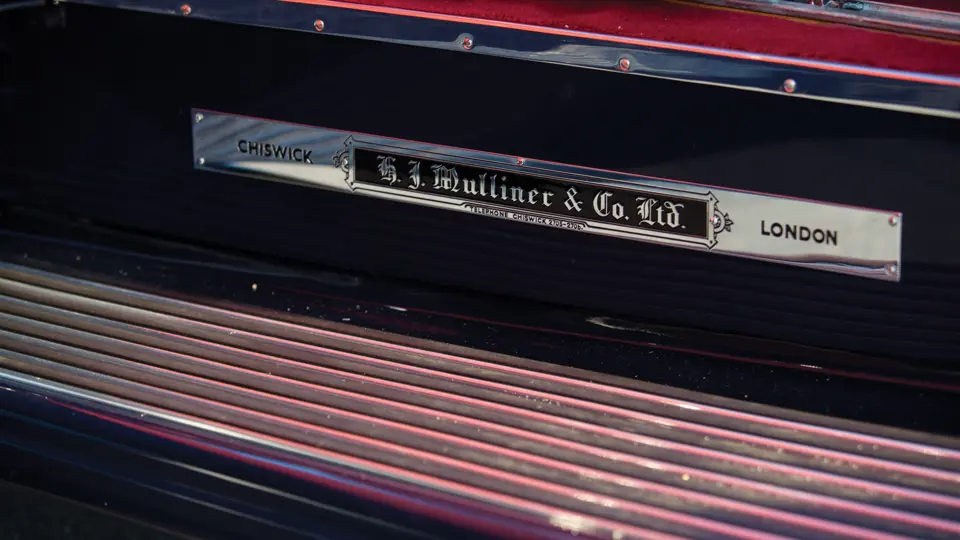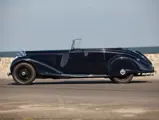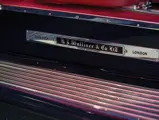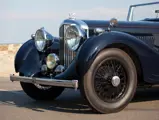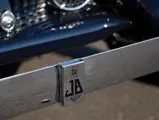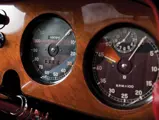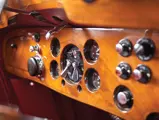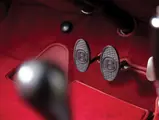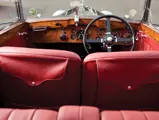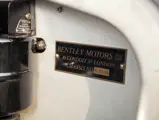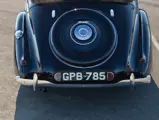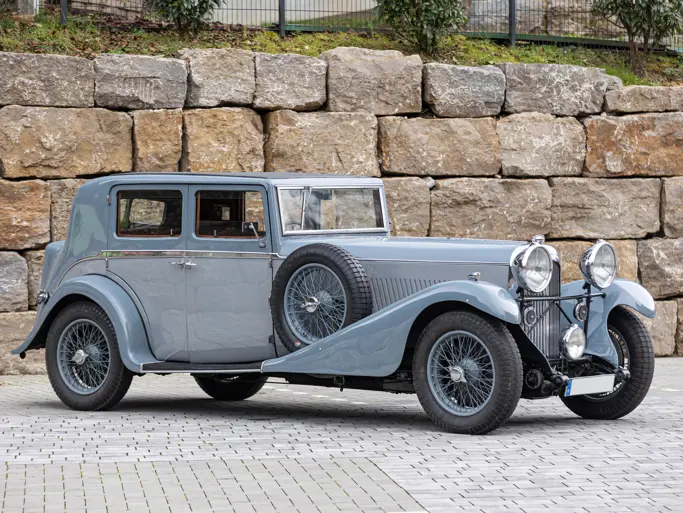
1937 Bentley 4¼-Litre Concealed Head Coupe by H.J. Mulliner
{{lr.item.text}}
$341,000 USD | Sold
{{bidding.lot.reserveStatusFormatted}}
- One of 15 Bentley 4¼-Litre Drophead Coupes by H.J. Mulliner
- Matching original body, engine, gearbox, and British registration
- Bentley Motors chassis card documentation
- Known long-term ownership from new
- Amelia Island award-winning restoration
125 bhp, 4,257 cc OHV six-cylinder engine with twin S.U. carburetors, four-speed manual gearbox, semi-elliptic suspension in the front and rear, adjustable hydraulic shock dampers, and four-wheel hydraulic drum brakes. Wheelbase: 125 in.
Bentley motor cars were produced in tandem with Rolls-Royces of the 1930s in Derbyshire, England, and they are known as “Derby Bentleys.” The 4¼-Litre was the second Bentley-badged model, produced after Rolls-Royce acquired Bentley Motors in 1931. The first was the venerable 3½-Litre, which shared many components with the Rolls-Royce 20/25.
As roadways were improved, Bentley engineers realized that the 3½-Litre Bentley was not fast enough for reliable, day-long, high-speed touring on the new Continental highways. Bentley considered supercharging the 3½-Litre model; however, bench-testing a supercharged 3½-liter engine proved disappointing. Bearings wore out quickly, and torque delivery was inconsistent.
The supercharger was set aside to focus on increasing engine capacity. Bore size increased from 3¼ inches to 3½ inches (82.6 millimeters to 88.9 millimeters), resulting in a 4,257-cubice centimeter engine. Bearings were upgraded from “white metal” to a new aluminum/tin alloy for the main and big ends. Larger valves, a larger oil sump, bigger carburetors, and longer air silencers were also fitted to the new 4¼-liter engine. Rigorous testing confirmed the new engine provided brisker acceleration, higher maximum speeds, and improved reliability during day-long runs at speeds from 70 to 90 mph.
The engine was offered as an option on the late series 3½-Litre Bentleys, but, by 1936, the GA-series 4¼-Litre car was launched. Continuous improvements were made, and later cars like this LS series benefitted from them. The speed-related hydraulic damping system, introduced with the 4¼, provided a more stable ride and crisper handling.
Motor magazine’s April 21, 1936, issue reported that the new 4¼-Litre Bentley (fitted with a Park Ward steel saloon body, heavier than this aluminum body) covered a “flying” quarter mile at Brooklands, at 96 mph, and 0–60 mph took 10.6 seconds.
Original Bentley records validate that this car was built to more exacting standards than usual. Hand-written notes on the original chassis card indicate that the car’s first owner-specified Dunlop tires were used over the standard “India Speed” brand, and the car was to be built for “UK Town and Touring” use. As with most luxury cars in the 1930s, a new Bentley buyer selected one of the bespoke coachbuilders to design and build his car’s body to his exact specifications; Bentley did not supply their cars with finished bodies until after World War II.
This disappearing top, drophead coupe body was designed and built by H.J. Mulliner and given the term “concealed head.” While the car was being bodied, it was frequently inspected by Bentley representatives, who gave it a final test before delivery. H.J. Mulliner produced hundreds of special-order bodies on Bentley and Rolls-Royce chassis. B92LS is one of one hundred and two 4¼-Litre Bentley chassis bodied by the firm. Most were saloons, and reliable sources indicate that only 15 were drophead coupes. It is unknown how many of those 15 were built with this engaging concealed head design, but it is believed to be quite rare. Unique to H.J. Mulliner, this allows the cloth top to be folded neatly below the waistline of the car. The top is entirely covered by a square-edged folding panel, much like a hinged metal tonneau cover. In addition, it takes little imagination to appreciate the French curves and deco touches that further distinguish this example.
The first owner was Ernest Taylor, who took delivery in Guildford, Surrey, in 1937. It was later sold to Paul Jameson, who kept it in England until 1970, when it was exported to the U.S. and sold to William Sherman, in Jamestown, New York. He kept the Drophead Coupe until 1975, when U.S. Coast Guard Captain (eventually Admiral) John Faigle, of Governor’s Island, New York, bought it, later moving to Wellesley Hills, Massachusetts, and then it finally went to Chevy Chase, MD.
A massive history file supplied by Admiral Faigle attests to his devotion to this project. His research was extensive, evidenced by the numerous large format copies of factory engineering drawings. Hundreds of restoration photographs from the 1970s and ’80s accompany receipts and correspondence with suppliers in the UK and U.S. More recently, Captain Faigle completed his dream: this Bentley’s body, paint, and stunning interior were finished to contemporary concours standards of presentation at Kent Bain’s Automotive Restorations, of Stratford, Connecticut. The engine bay and chassis are detailed to a similar high level. This specialist attention resulted in a well-deserved class award at the prestigious 2013 Amelia Island Concours d’Elegance.
The Derby Bentley has come into favor with collectors. Few pre-war cars carry more graceful coachwork, or offer more fun behind the wheel. The quality is on a par with anything Rolls-Royce produced in the 1930s, and the 4¼-Litre provides brisk acceleration and responsive handling. With a top speed of almost 100 mph, its low-revving engine can easily cruise at motorway speeds, making it a popular tour car. Exceptional Derby Bentleys with original engines and superlative coachwork, like B29LS, are in great demand, and many remained with the original owners for years, with many being considered as family heirlooms.
The car on offer represents one of the most attractive body styles ever fitted to a Derby Bentley. The package includes copies of the factory and H.J. Mulliner build cards, its UK “buff” colored logbook, and an original owner’s manual. Importantly, the original jack and proper hand tools are supplied. Superbly restored by its most recent, dedicated, long-term owner in Midnight Blue with red Connolly hide interior, it will hold much appeal to the most discriminating British car connoisseur.

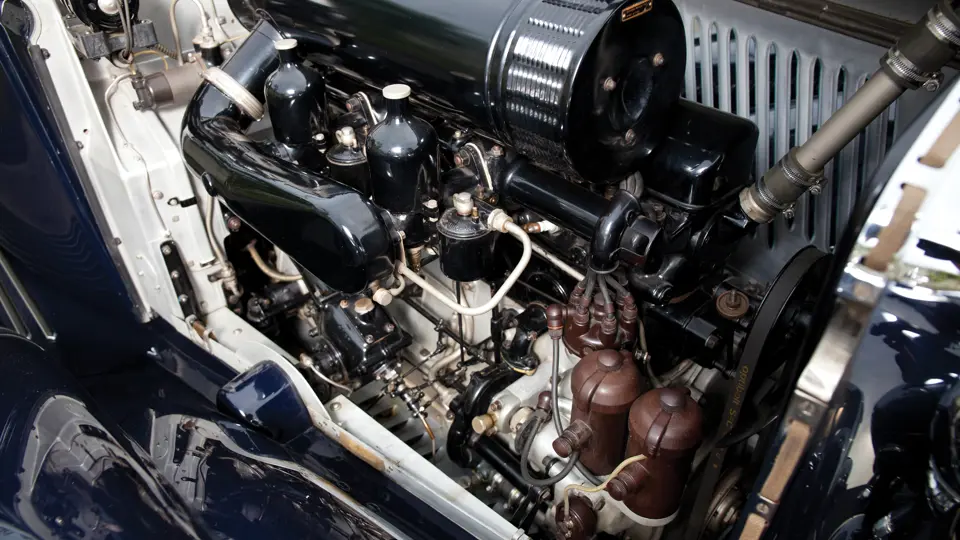
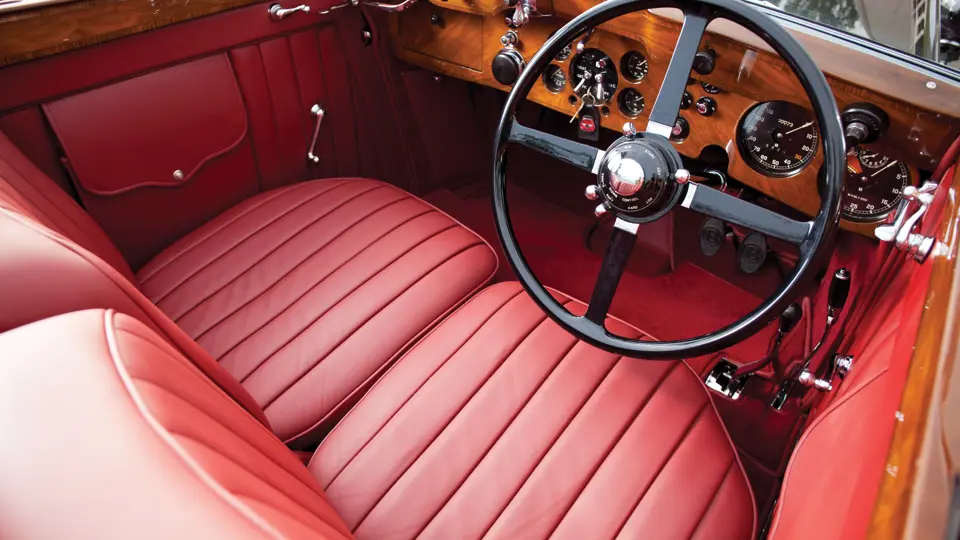

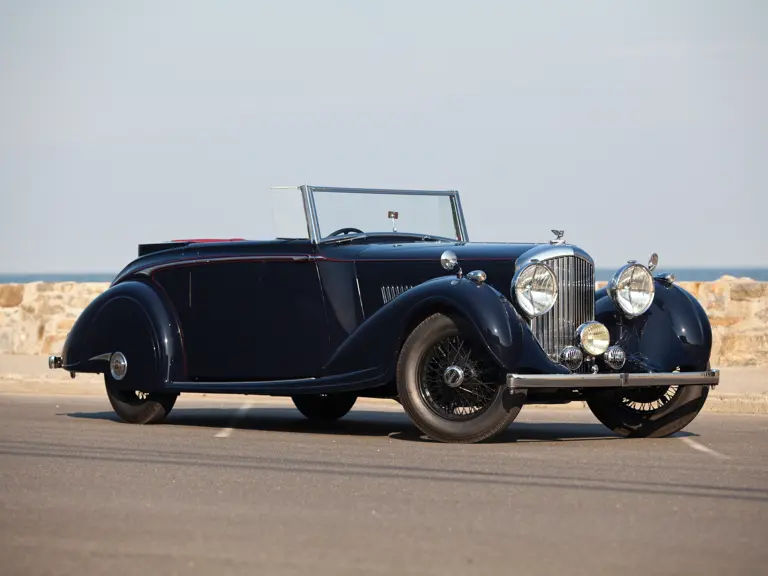
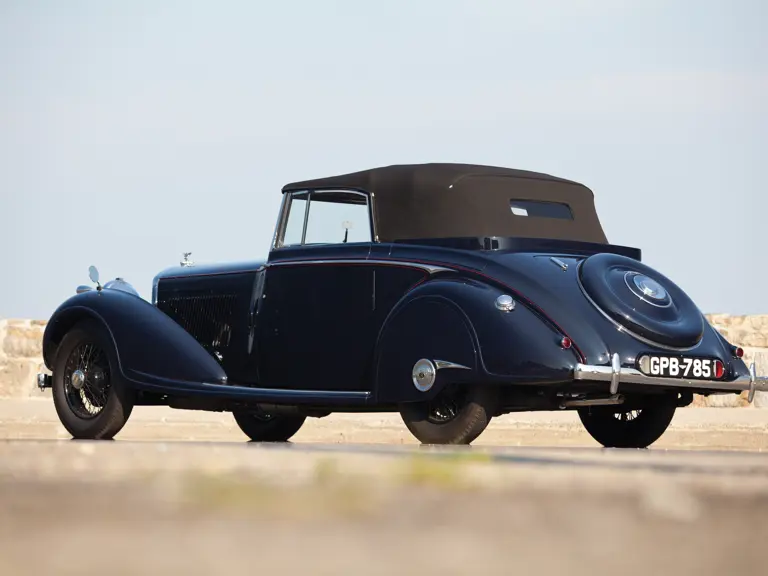
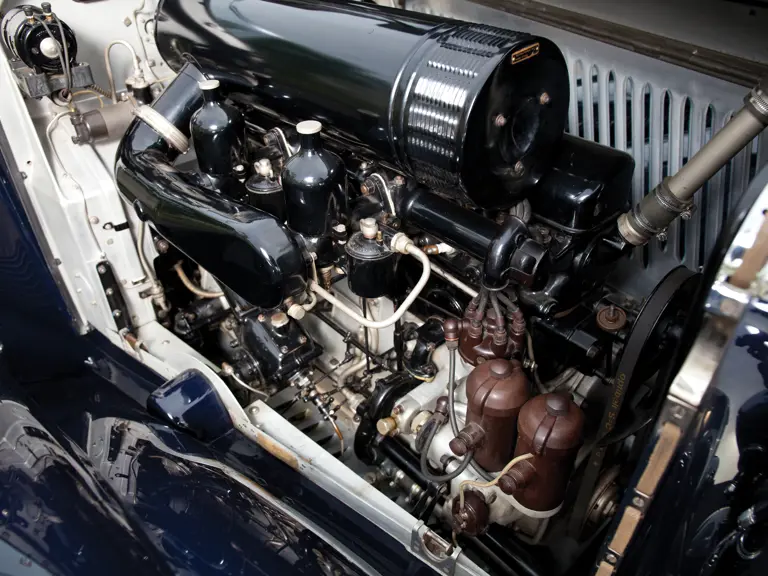

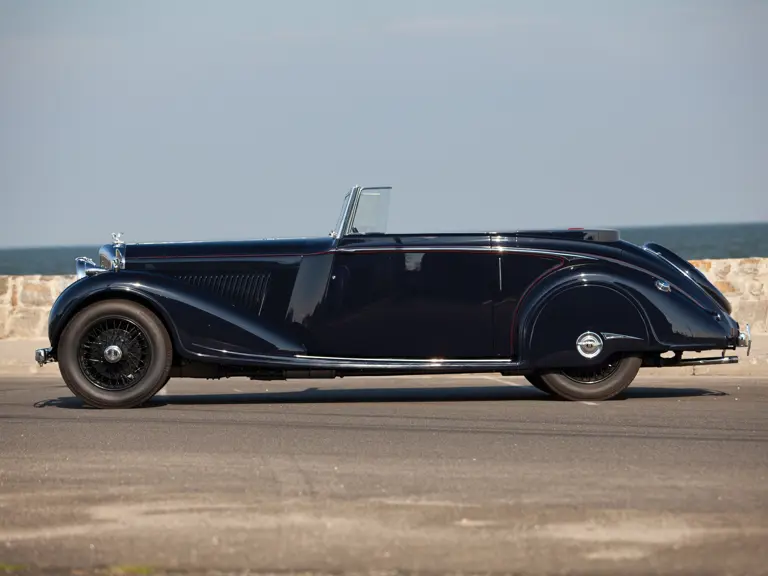
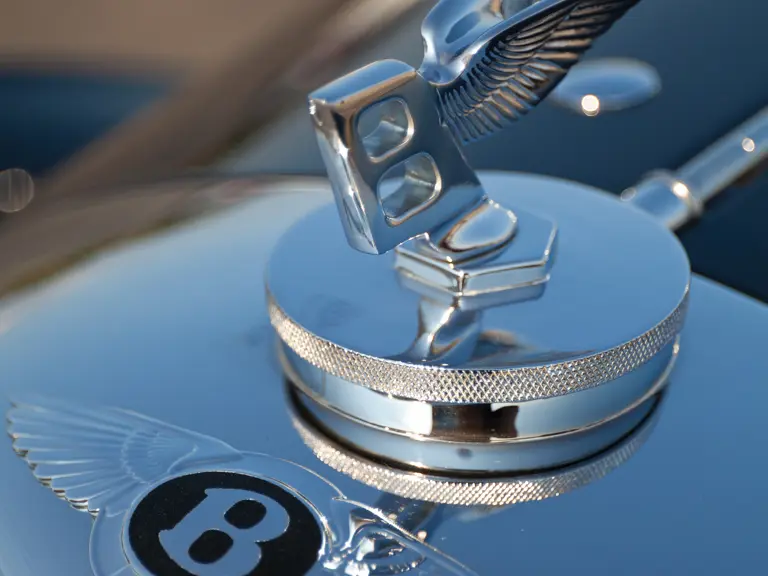
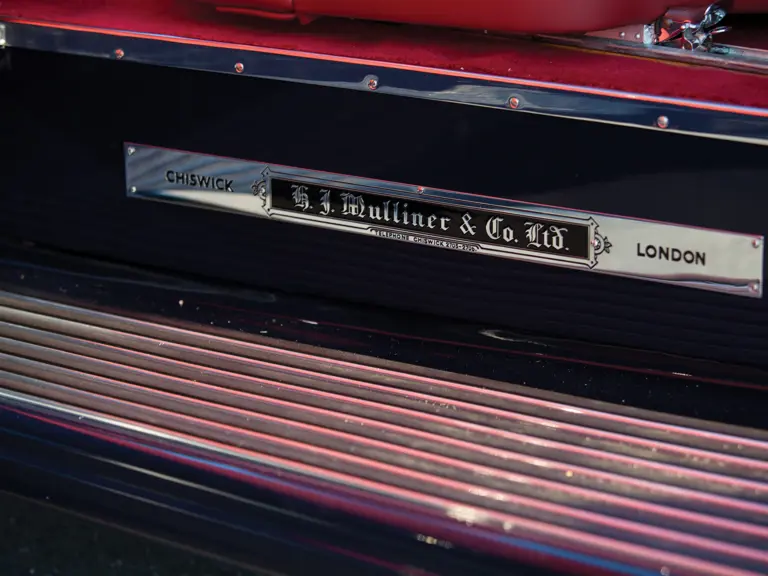
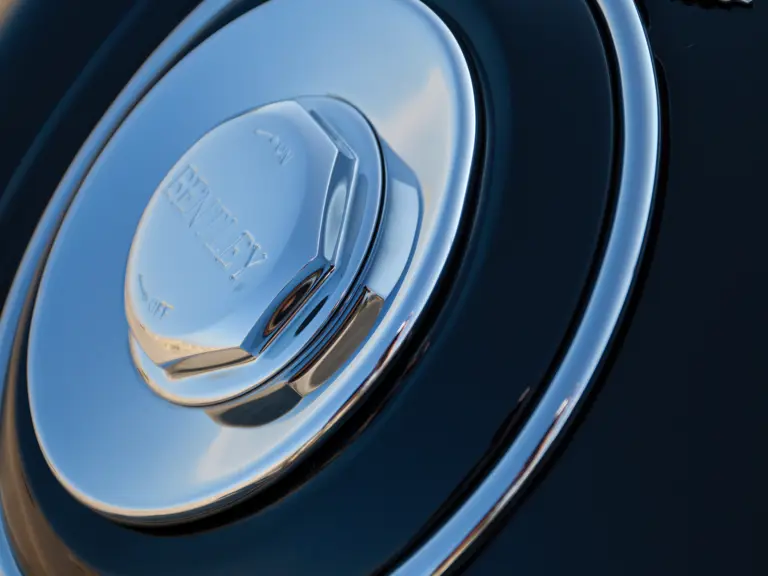
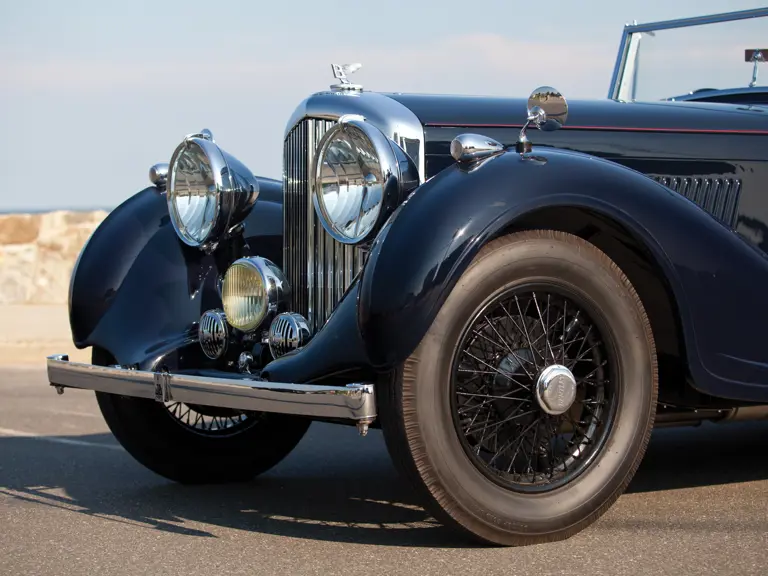
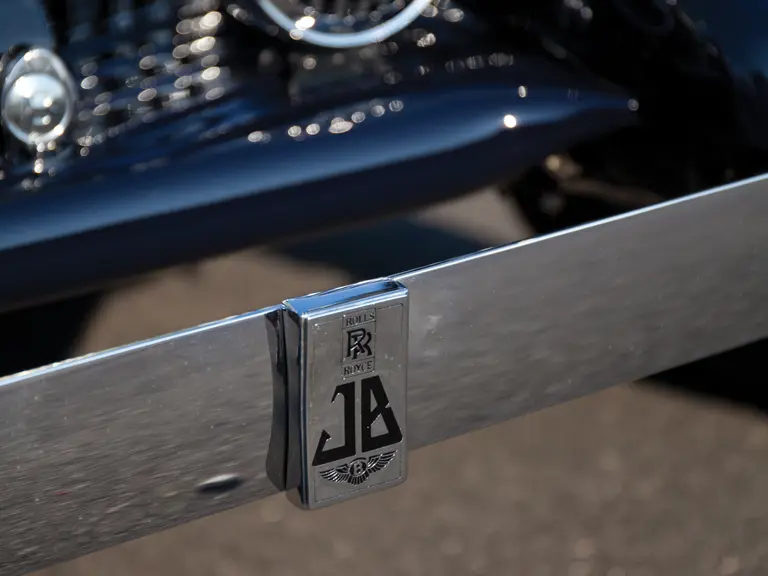

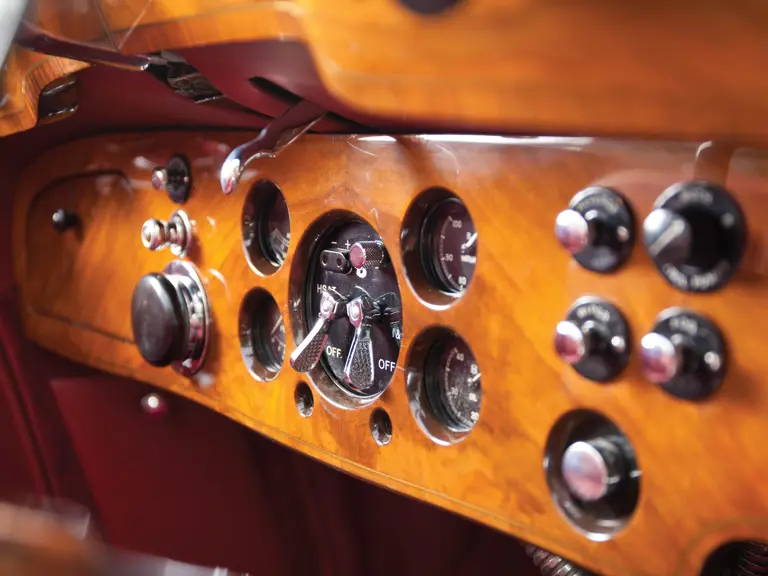
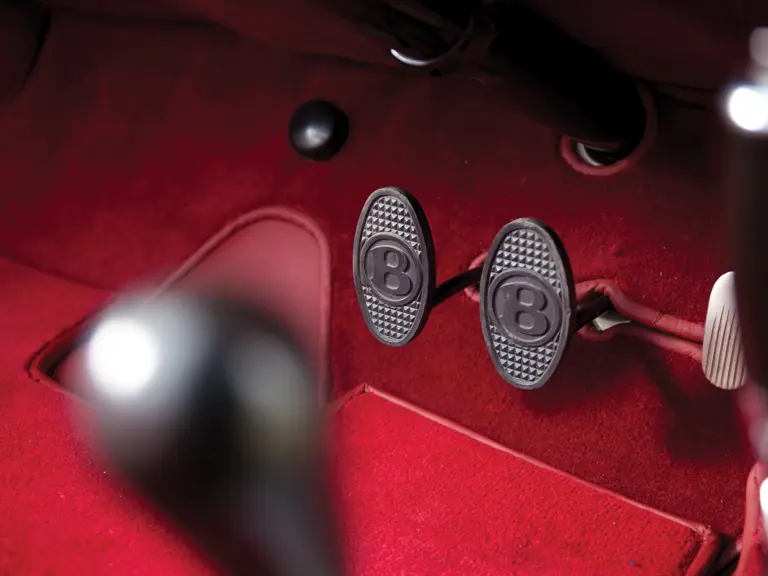
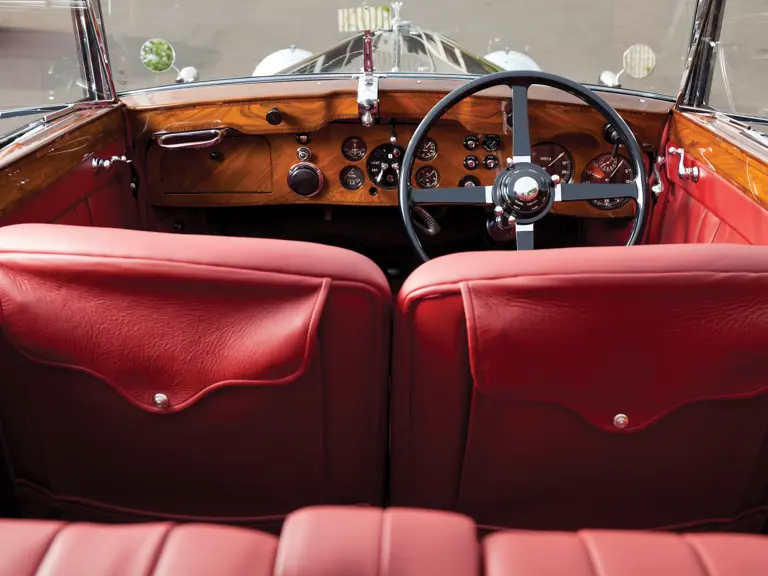

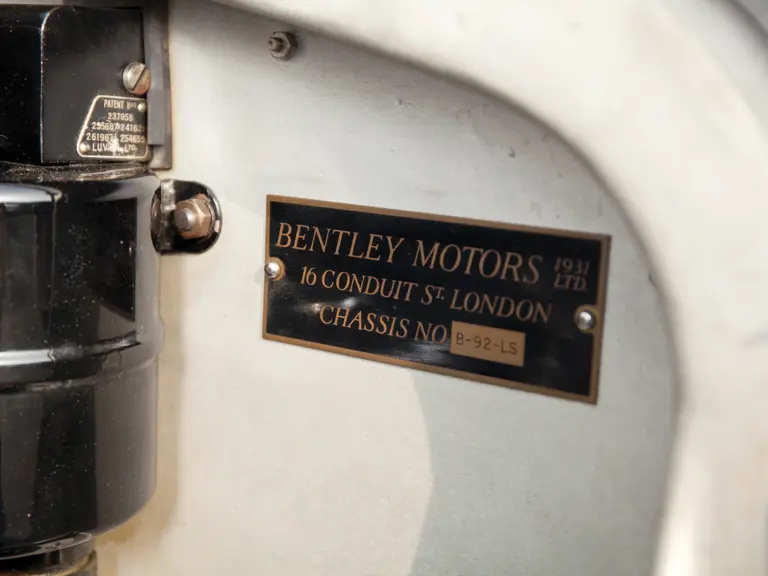
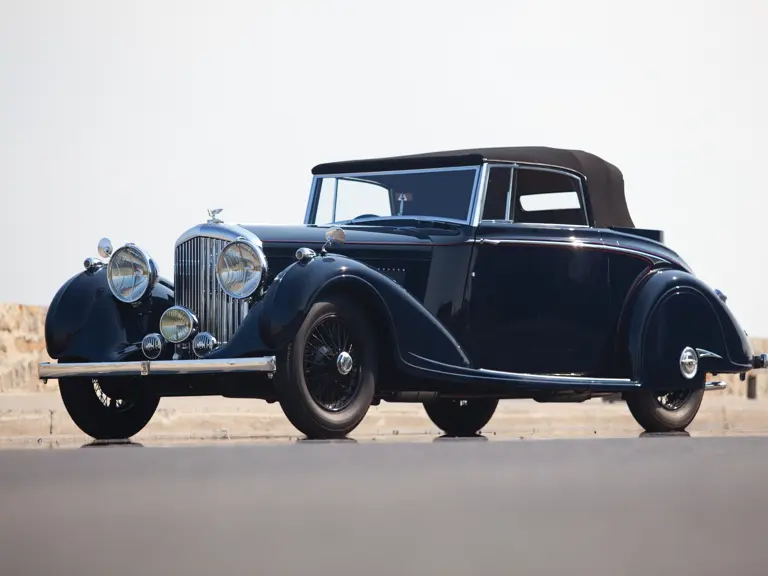
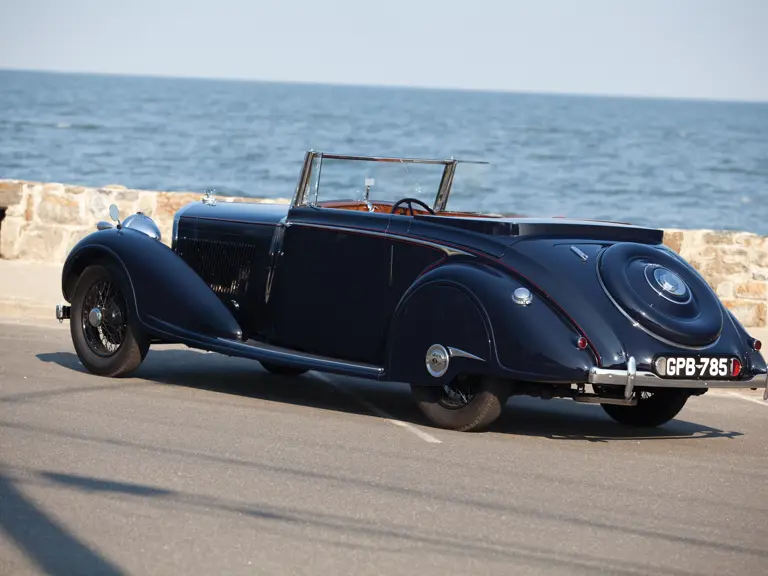
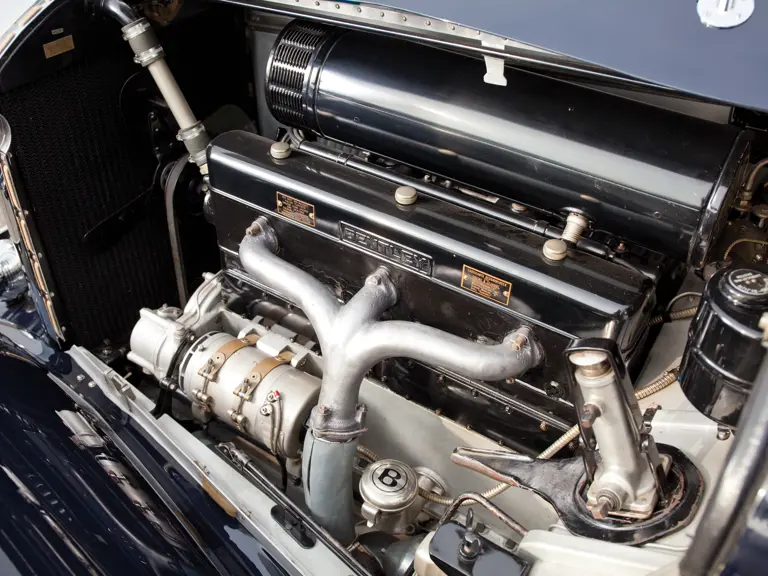

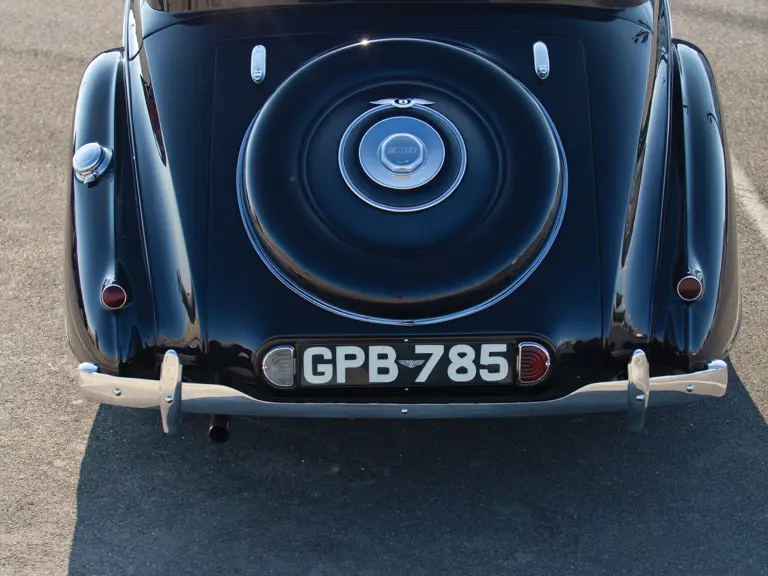
 | Monterey, California
| Monterey, California
